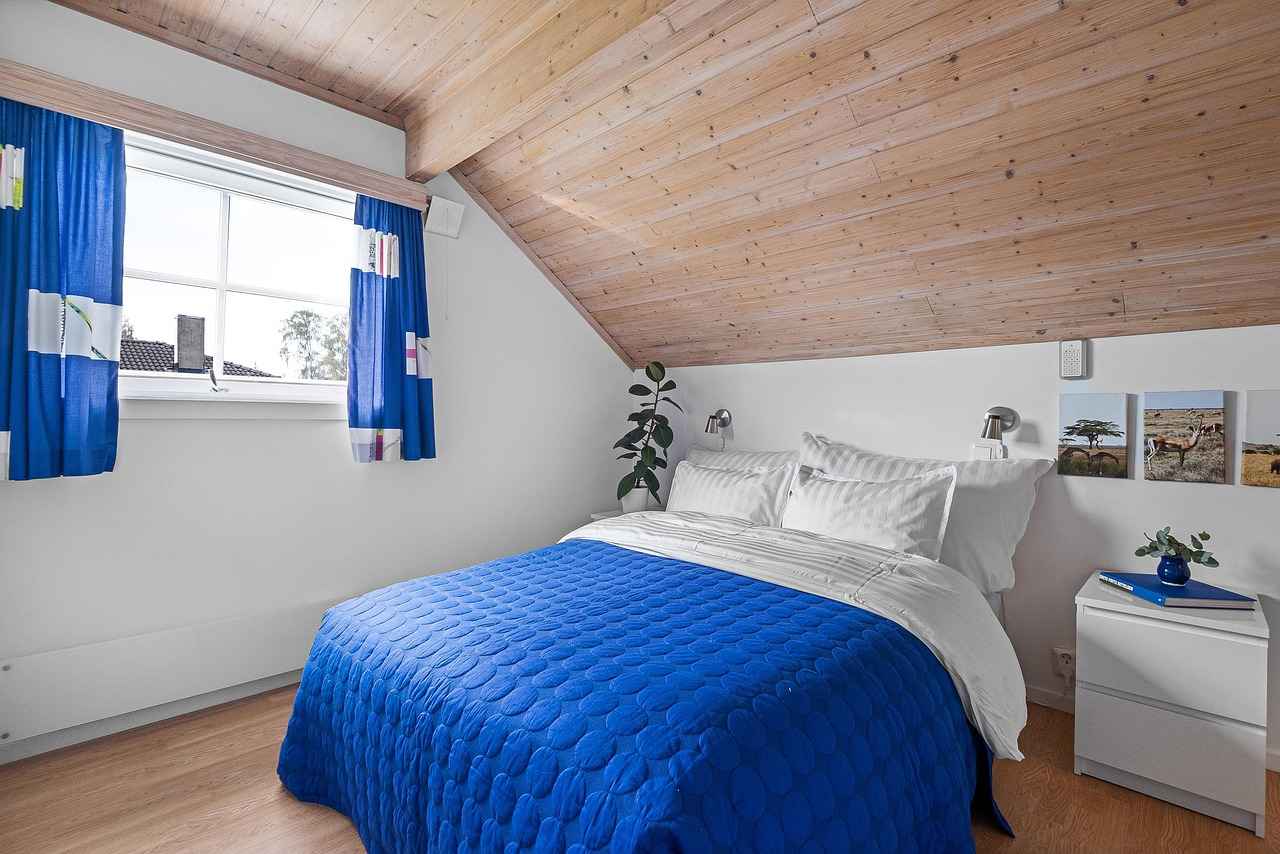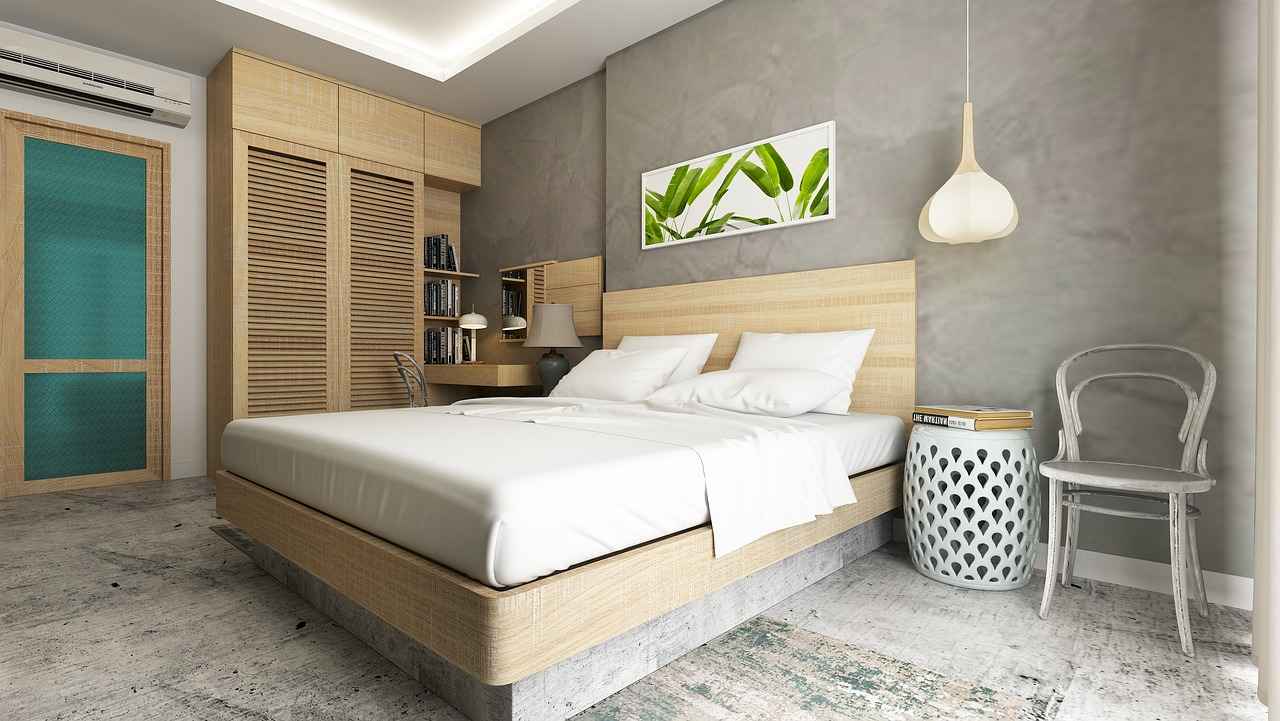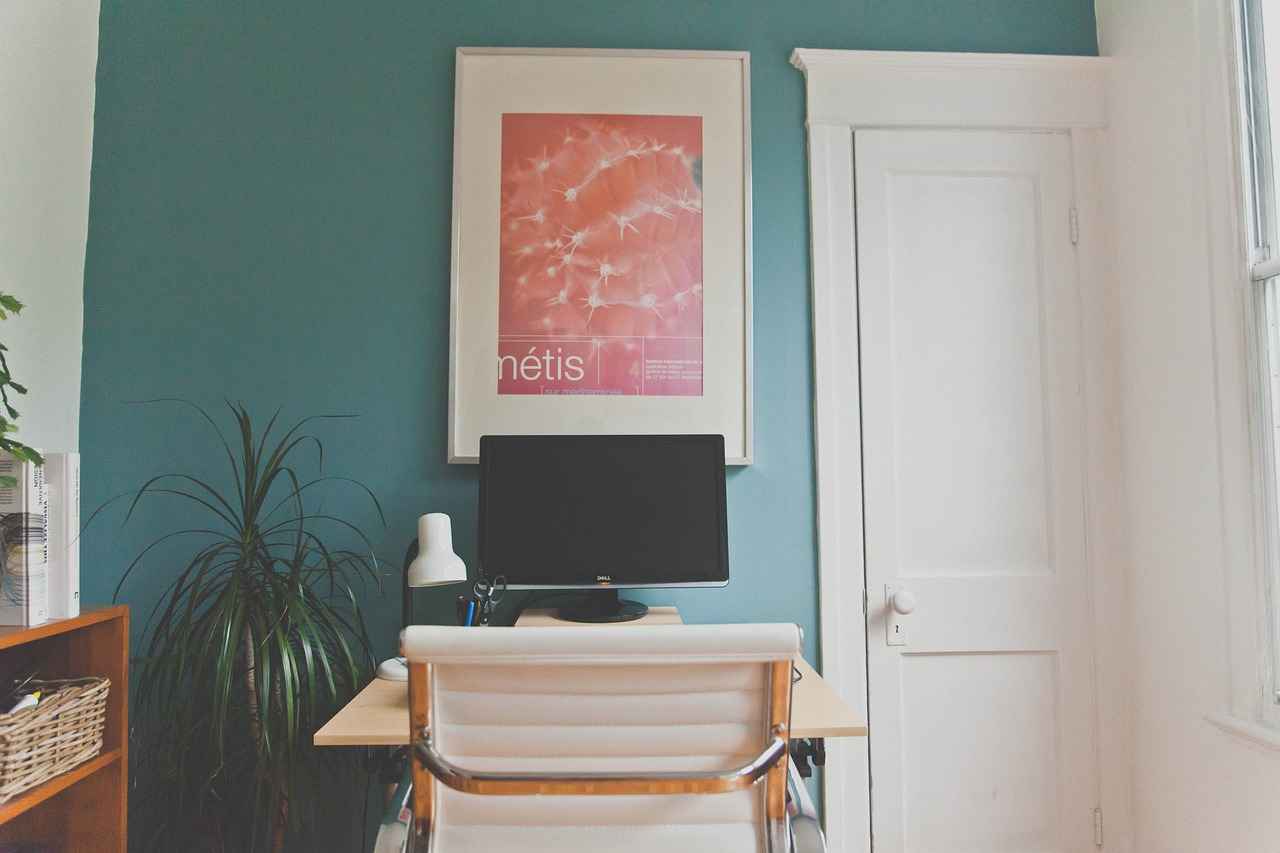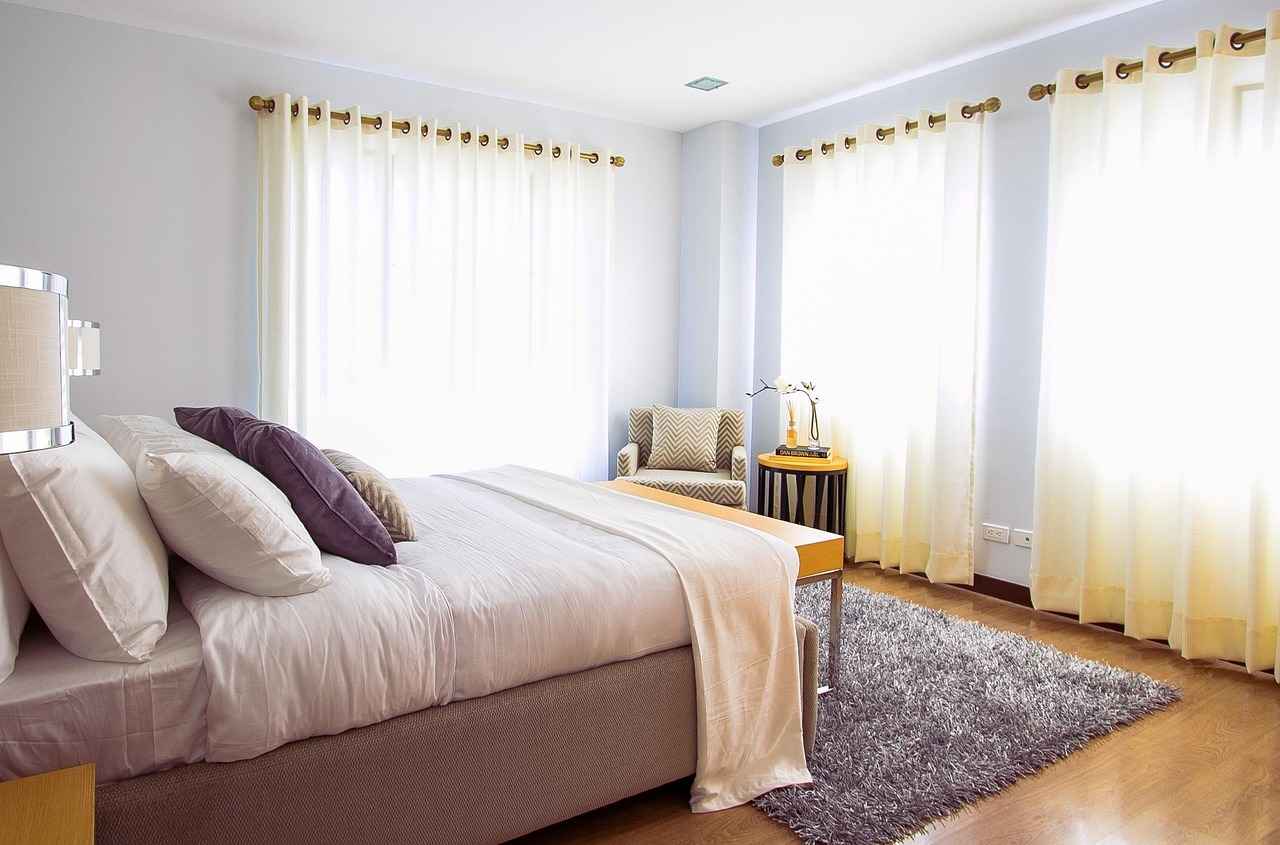This article delves into innovative design ideas for enhancing the wall behind your bed, providing tips and inspiration to create a stylish and personalized bedroom space. The wall behind your bed is not just a plain surface; it serves as a focal point that can elevate the overall aesthetic of your room. With the right design choices, you can transform this space into a cozy and inviting atmosphere.
Why Bed Wall Design Matters
The wall behind your bed is crucial in establishing the room’s character. A well-designed bed wall can create a sense of harmony and balance, contributing to a peaceful environment that promotes relaxation. It’s the first thing you see when you wake up and the last thing before you sleep, making its design vital.
Choosing the Right Color Palette
Selecting the right colors for your bed wall is essential. Colors can influence mood and perception, so it’s important to choose a palette that resonates with your personal style.
- Understanding Color Psychology: Different colors evoke various emotions. For instance, blues and greens are known for their calming effects, while yellows and oranges can energize a space.
- Calming Neutrals: Shades like beige, gray, or soft whites can create a serene atmosphere, making them ideal for a restful bedroom environment.
- Bold Accents: Incorporating bold colors as accents can add vibrancy and personality to your bed wall, creating a striking focal point without overwhelming the space.
Creating a Feature Wall
A feature wall can significantly enhance your bedroom’s visual appeal. This technique involves using different materials or colors to draw attention to the wall behind your bed. Consider using wallpaper, paint, or even wood panels to create a stunning backdrop.
Incorporating Artwork and Decor
Artwork and decor play a vital role in personalizing your bed wall. They can reflect your personality and interests, making the space uniquely yours.
- Selecting the Right Art Pieces: Choose art that resonates with you. This could include paintings, prints, or photographs that evoke positive memories or feelings.
- Utilizing Shelving for Decor: Shelving can provide a functional and aesthetic solution for displaying books, plants, or decorative items, adding depth and character to your bed wall.
Textured Wall Treatments
Textured wall treatments can add dimension and interest to your bedroom. Various techniques can be employed to create a unique backdrop for your bed.
- Using Wallpaper Effectively: Wallpaper offers endless design possibilities. From bold patterns to subtle textures, the right wallpaper can dramatically change the look of your bed wall.
- Incorporating Wood Panels: Wood panels can bring warmth and a natural element to your bedroom. They can be used as a backdrop to create a rustic or modern feel.
Lighting Considerations for Bed Walls
Lighting plays a vital role in highlighting your bed wall design. Thoughtful lighting choices can enhance the overall ambiance and functionality of your bedroom.
- Accent Lighting Techniques: Accent lighting can draw attention to specific features of your bed wall, such as artwork or textures, creating a visually appealing effect.
- Layering Light Sources: Layering different light sources, such as bedside lamps, wall sconces, and overhead fixtures, can provide versatility and enhance the overall design of your bedroom space.
In conclusion, the wall behind your bed offers endless possibilities for creativity and personalization. By thoughtfully selecting colors, artwork, textures, and lighting, you can create a stylish and inviting bedroom that reflects your unique personality and enhances your overall well-being.

Why Bed Wall Design Matters
The design of the wall behind your bed is crucial in defining the overall ambiance of your bedroom. This area not only serves as a backdrop but also acts as a focal point that can significantly influence the room’s aesthetic. A thoughtfully designed bed wall can transform your space into a cozy retreat, reflecting your personal style while enhancing functionality.
When considering why bed wall design matters, it’s essential to recognize its impact on both visual appeal and mood. A well-curated bed wall can create a sense of harmony and balance in the room, making it a more inviting place to relax and unwind. Here are several reasons why investing time and effort into this design element is worthwhile:
- Creates a Focal Point: The wall behind your bed naturally draws the eye, making it an ideal place to showcase your design choices. Whether through color, artwork, or texture, this wall can become the centerpiece of your bedroom.
- Enhances Room Size Perception: Clever design techniques, such as using mirrors or light colors, can create an illusion of more space, making your bedroom feel larger and more open.
- Sets the Mood: The right color palette and decor can evoke specific emotions. Soft, muted tones can promote relaxation, while vibrant colors can energize the space.
- Incorporates Personal Style: Your bed wall is an opportunity to express your individuality. From framed photographs to unique art pieces, this space can showcase your personality and interests.
- Provides Practical Solutions: Functional elements like shelving or integrated lighting can enhance the usability of your bed wall, making it both stylish and practical.
Incorporating these elements into your bed wall design not only beautifies your bedroom but also elevates its functionality. Consider how you can utilize the space effectively while ensuring it aligns with your personal taste. The choices you make can create a harmonious environment that serves as a sanctuary from the outside world.
Ultimately, the wall behind your bed is more than just a surface; it’s a canvas for creativity and comfort. By focusing on thoughtful design, you can create a bedroom that is not only visually appealing but also a true reflection of who you are. Embrace the potential of your bed wall and transform your bedroom into a stylish haven that you love coming home to.

Choosing the Right Color Palette
When it comes to designing your bedroom, the color palette you choose for the wall behind your bed is of utmost importance. The right colors can transform your space, influencing both your mood and perception. Therefore, selecting a color scheme that resonates with your personal style is essential.
Colors and Their Impact on Mood
Colors are not just aesthetic choices; they have a profound psychological impact. For instance, blue is often associated with calmness and tranquility, making it an excellent choice for a restful bedroom. On the other hand, yellow can evoke feelings of happiness and energy, which may be suitable for a vibrant and inviting space. Understanding these associations can help you curate the perfect atmosphere in your bedroom.
Exploring Color Combinations
When selecting a color palette, consider using a combination of colors that work well together. Here are a few popular combinations:
- Soft Neutrals and Pastels: Combining soft grays with pastel pinks or blues can create a serene and inviting atmosphere.
- Bold and Bright: Pairing deep navy with bright yellow or coral can add a striking contrast, making your bed wall a focal point.
- Earthy Tones: Using greens, browns, and beiges can bring a natural, calming feel to your space, reminiscent of the outdoors.
Accent Walls: Making a Statement
Consider creating an accent wall to enhance your bed wall design. This technique allows you to use a bolder color or pattern on one wall while keeping the others neutral. For example, a deep emerald green accent wall can provide a rich backdrop that highlights your bed and bedding. This method not only adds depth to your room but also allows for personal expression.
Incorporating Patterns and Textures
In addition to solid colors, incorporating patterns and textures can elevate your bed wall’s appearance. Wallpaper with geometric designs or floral motifs can add visual interest and personality. Alternatively, using textured materials like reclaimed wood or fabric panels can create a cozy, inviting atmosphere while maintaining a sophisticated look.
Testing Colors in Your Space
Before committing to a color, it’s wise to test samples in your bedroom. Paint swatches on the wall and observe how they look at different times of the day. Lighting can drastically change the perception of color, so ensure that the hues you choose align with the overall lighting in your room.
Personal Style and Preferences
Ultimately, your bed wall color should reflect your personal style. Whether you prefer calming neutrals, vibrant accents, or earthy tones, the colors you choose should resonate with your aesthetic preferences and create a space where you feel comfortable and relaxed.
By understanding the impact of color and thoughtfully selecting a palette that complements your style, you can create a bed wall that not only enhances your bedroom’s design but also contributes to a positive and uplifting atmosphere.
Understanding Color Psychology
is essential in interior design, particularly when it comes to creating a harmonious and inviting atmosphere in your bedroom. The colors you choose for your space can have profound effects on your mood, emotions, and overall well-being. By leveraging the principles of color psychology, you can curate an environment that not only reflects your personal style but also promotes relaxation and rejuvenation.
Colors are more than just visual elements; they are powerful tools that evoke specific emotional responses. For instance, blue is widely recognized for its calming properties, making it an excellent choice for bedroom walls. It can help lower blood pressure and create a serene environment conducive to sleep. Similarly, green, reminiscent of nature, can instill a sense of tranquility and balance, making it ideal for a restful retreat.
On the other hand, vibrant hues like red and orange can energize a space, stimulating conversation and excitement. While these colors may be suitable for living areas or creative spaces, they may not be the best choice for a bedroom where relaxation is paramount. Instead, consider using them as accent colors through decorative pillows, artwork, or small furnishings to add personality without overwhelming the senses.
Neutral tones also play a significant role in color psychology. Shades such as beige, gray, and soft whites can create a soothing backdrop that promotes a sense of peace and comfort. These colors allow for flexibility in decor, enabling you to easily change the look of your room with different accent colors or accessories.
When selecting a color palette for your bedroom, it’s crucial to consider the overall mood you want to achieve. For a cozy and inviting space, aim for warm tones like taupe or soft peach. These hues can create a welcoming atmosphere that feels intimate and nurturing. In contrast, if you prefer a more modern and minimalist aesthetic, cooler shades such as charcoal or icy blue can lend a sophisticated edge to your design.
Additionally, the psychology of color extends beyond the walls of your bedroom. The decorative elements you choose, such as bedding, curtains, and artwork, should also align with your color scheme. For example, pairing a calming blue wall with white linens and natural wood accents can create a cohesive and tranquil environment.
To further enhance your understanding of color psychology, consider conducting a color test in your space. Observe how different colors make you feel throughout the day, noting any changes in your mood or energy levels. This personal insight can guide your choices and help you create a bedroom that genuinely reflects your emotional needs.
Incorporating color psychology into your bedroom design is not just about aesthetics; it’s about creating a space where you can unwind and recharge. By thoughtfully selecting colors that resonate with you and enhance your emotional well-being, you can transform your bedroom into a sanctuary that nurtures your mind and body.
In conclusion, understanding color psychology is an invaluable aspect of interior design that can significantly influence the atmosphere of your bedroom. By selecting colors that evoke the desired emotions and complement your personal style, you can create a harmonious and inviting space tailored to your needs.
Calming Neutrals
In the realm of interior design, color selection plays a pivotal role in setting the mood and atmosphere of a space. When it comes to creating a restful bedroom environment, opting for calming neutral colors can be a game-changer. Shades such as beige, soft gray, and gentle whites are not just aesthetically pleasing; they also foster a sense of tranquility and relaxation, making them ideal choices for your sanctuary.
Neutral colors are often associated with serenity and balance. These shades create a harmonious backdrop that allows other design elements to shine. For instance, a soft beige wall can serve as a canvas for vibrant artwork or colorful bedding, providing a perfect contrast without overwhelming the senses. By using neutral tones, you can achieve a sophisticated look that remains timeless and versatile.
One of the significant advantages of using calming neutrals is their ability to enhance natural light. Light-colored walls reflect more sunlight, making the room feel brighter and more spacious. This is particularly beneficial in smaller bedrooms or spaces with limited natural light. A soft white or pale gray can amplify the light, creating an inviting atmosphere that encourages relaxation.
Moreover, calming neutrals are incredibly versatile. They can easily blend with various decor styles, from modern minimalism to cozy bohemian aesthetics. This adaptability allows homeowners to experiment with different textures and materials without clashing with the overall color scheme. For example, pairing a beige wall with wooden accents or soft textiles can create a warm, inviting space.
In addition to their aesthetic benefits, neutral colors can have a profound impact on mental well-being. Studies in color psychology suggest that softer hues can reduce stress and anxiety levels. By surrounding yourself with calming colors, you can create a peaceful retreat that promotes restful sleep and relaxation. This is especially important in a bedroom, where the primary function is to provide a restful environment.
To enhance the serene vibe of your bedroom, consider incorporating various textures and materials into your design. For instance, a plush beige rug, soft gray curtains, or a textured white throw can add depth and interest to the space. These elements not only contribute to the overall aesthetic but also create a cozy atmosphere that invites relaxation.
Another effective way to utilize calming neutrals is through layering. By combining different shades of beige, gray, and white, you can create a sophisticated monochromatic look that adds dimension to your bedroom. This technique allows you to play with contrasts and highlights, ensuring that the space feels dynamic while still maintaining a sense of calm.
In conclusion, opting for calming neutral colors like beige, gray, and soft whites can significantly enhance the atmosphere of your bedroom. These hues foster a serene environment, promote relaxation, and allow for creative expression through decor. By thoughtfully incorporating these colors, you can transform your bedroom into a peaceful haven that reflects your personal style while providing a restful retreat.
Bold Accents
When designing a bedroom, the wall behind your bed is often the most visible and impactful area in the room. This space provides an excellent opportunity to express your style and create a unique atmosphere. One of the most effective ways to achieve this is by incorporating bold colors as accents. Bold colors can add vibrancy and personality to your bed wall, creating a striking focal point without overwhelming the space.
Choosing the right bold color can transform your bedroom into a lively sanctuary. Colors such as deep blues, rich greens, or vibrant reds can evoke a sense of energy and passion. When used as accents, these colors can highlight architectural features or artwork, drawing the eye and creating a sense of depth. For example, painting just the bed wall in a bold hue while keeping the other walls neutral can create a stunning visual contrast.
To effectively incorporate bold colors, consider the following tips:
- Balance with Neutrals: Pair bold colors with neutral tones to maintain harmony in your bedroom. This balance allows the bold accents to stand out without overwhelming the space.
- Use Accessories: Incorporate bold-colored accessories such as throw pillows, blankets, or artwork to complement the wall color. This approach allows for flexibility in changing the decor without the commitment of painting.
- Consider Lighting: Lighting plays a crucial role in how colors are perceived. Ensure that your bold colors are well-lit to enhance their vibrancy and impact.
- Test Samples: Before committing to a bold color, test samples on the wall. Observe how the color looks at different times of the day to ensure it aligns with your vision.
In addition to paint, you can explore wall decals or removable wallpaper featuring bold patterns and colors. These options allow for easy updates to your decor without the permanence of paint. Moreover, they can be a fun way to experiment with different styles and trends.
When selecting bold colors, consider the overall theme and mood of your bedroom. For a modern look, you might opt for geometric patterns in bright colors, while a bohemian style could embrace rich jewel tones and eclectic prints. The key is to ensure that the bold accents reflect your personality and enhance the overall aesthetic of the room.
Furthermore, don’t forget about the importance of texture. Incorporating textured elements, such as a bold fabric headboard or a vibrant tapestry, can add depth and interest to your bed wall. Textures can work hand-in-hand with bold colors, creating a multi-dimensional effect that captivates the eye.
Ultimately, the goal of using bold accents on your bed wall is to create a space that feels both inviting and expressive. By thoughtfully selecting colors and materials, you can achieve a stylish look that resonates with your personal taste while ensuring the room remains a tranquil retreat.
In summary, incorporating bold colors as accents on your bed wall can dramatically enhance your bedroom’s aesthetic. By balancing these colors with neutrals, utilizing accessories, considering lighting, and exploring textured elements, you can create a stunning focal point that adds personality and vibrancy to your space.
Creating a Feature Wall
A feature wall can significantly enhance the visual appeal of your bedroom. This design technique involves using different materials, colors, or patterns to create a striking focal point, particularly on the wall behind your bed. By thoughtfully selecting elements for this wall, you can transform an ordinary bedroom into a stylish sanctuary.
A feature wall, also known as an accent wall, serves as a visual anchor in your bedroom. It draws the eye and can set the tone for the entire space. When done correctly, it can make your bedroom feel more inviting and personalized. The wall behind the bed is often the most suitable choice for this treatment, as it is typically the first thing you see when entering the room.
- Paint: A fresh coat of paint in a bold or contrasting color can instantly elevate the look of your bedroom. Consider colors that evoke the mood you desire, whether it’s calming blues or energizing yellows.
- Wallpaper: With a wide variety of patterns and textures available, wallpaper can add depth and interest. Choose a design that resonates with your style—floral prints for a romantic feel or geometric patterns for a modern touch.
- Wood Panels: Incorporating wood can add warmth and a natural element to your space. Whether you opt for reclaimed wood for a rustic look or sleek, modern panels, this material can create a stunning backdrop.
- Textiles: Fabrics such as tapestries or wall hangings can introduce softness and texture. These can be particularly effective in creating a cozy atmosphere.
Choosing the right color scheme is essential when designing a feature wall. Bold colors can create a dramatic effect, while softer hues can promote tranquility. Here are a few ideas:
- Monochromatic Schemes: Using varying shades of the same color can create a sophisticated and cohesive look.
- Contrasting Colors: Pairing a bold color with a neutral can add excitement without overwhelming the space.
- Complementary Colors: Colors opposite each other on the color wheel can create a vibrant and energetic feel.
Once your feature wall is established, consider enhancing it with artwork and decor. This not only personalizes your space but also adds layers of interest. Here are some tips:
- Gallery Wall: Create a gallery wall by arranging various art pieces, photographs, or mirrors. This can add character and showcase your personality.
- Shelving: Floating shelves can be used to display books, plants, or decorative items, adding functionality and style.
Lighting is crucial in accentuating your feature wall. Consider these options:
- Accent Lighting: Use spotlights or wall sconces to draw attention to specific elements, such as artwork or textures.
- Layered Lighting: Combining different types of lighting—ambient, task, and accent—can create a warm and inviting atmosphere.
In summary, creating a feature wall behind your bed can drastically enhance the visual appeal and overall ambiance of your bedroom. By carefully selecting materials, colors, and decor, you can craft a personalized space that reflects your style and meets your needs. This focused approach not only beautifies your room but also elevates your mood, making your bedroom a true sanctuary.

Incorporating Artwork and Decor
Incorporating artwork and decor into your bedroom design is a powerful way to express your individuality and enhance the overall atmosphere of your space. The wall behind your bed, often referred to as the bed wall, serves as a canvas for creativity, allowing you to showcase pieces that resonate with your personality and interests.
Why Artwork and Decor Matter
Artwork and decor are not just embellishments; they are essential elements that breathe life into your bedroom. They can evoke emotions, spark conversations, and create a sense of comfort and belonging. Whether you prefer calming landscapes, vibrant abstracts, or personal photographs, the right pieces can transform your bed wall into a stunning focal point.
Choosing the Right Artwork
When selecting art for your bed wall, consider the following:
- Personal Connection: Choose pieces that resonate with you personally. This could be art that reflects your hobbies, travels, or favorite colors.
- Size and Scale: Ensure that the size of the artwork is proportionate to the wall space. A large piece can create a dramatic effect, while a gallery wall of smaller pieces can add a sense of whimsy.
- Color Coordination: Select artwork that complements your bedroom’s color palette, enhancing the overall aesthetic without clashing with existing decor.
Creating a Gallery Wall
A gallery wall is an excellent way to display multiple pieces of art and create a personalized visual narrative. Here are some tips:
- Layout Planning: Before hanging, lay out the pieces on the floor to find a configuration that feels balanced and visually appealing.
- Mixing Mediums: Combine different types of art, such as paintings, photographs, and even three-dimensional pieces, to add depth and interest.
- Spacing: Maintain consistent spacing between frames for a cohesive look, or vary the spacing for a more eclectic feel.
Utilizing Shelving for Decor
Shelving is a versatile solution for displaying not only art but also decorative items that reflect your style. Consider these ideas:
- Books and Plants: Stack books horizontally and vertically, interspersing them with small potted plants to bring a touch of nature indoors.
- Personal Mementos: Incorporate items that tell your story, such as souvenirs from trips, family photos, or handmade crafts.
- Layering Heights: Use varying heights of objects to create visual interest and prevent the shelf from appearing flat.
Framing and Display Techniques
The way you frame and display your artwork can significantly impact its overall effect. Consider these techniques:
- Gallery Frames: Use uniform frames for a polished and sophisticated look, or mix different styles for a more casual vibe.
- Floating Shelves: Install floating shelves to create a modern look that allows for easy rearrangement of decor.
- Wall Hooks: Use decorative hooks to hang lightweight art or textiles, adding a unique touch to your display.
Lighting as an Essential Element
Effective lighting can elevate your artwork and decor, making it a crucial consideration in your design. Here are some tips:
- Accent Lighting: Use spotlights or wall sconces to highlight specific pieces, creating a dramatic effect.
- Natural Light: Position artwork where it can benefit from natural light without direct sunlight, which can fade colors over time.
- Layered Lighting: Incorporate different sources of light, such as bedside lamps and overhead fixtures, to create a warm and inviting ambiance.
Incorporating artwork and decor into your bed wall design is a rewarding endeavor that allows you to express your unique style. By thoughtfully selecting pieces that resonate with you and considering how they interact with your space, you can create a bedroom that is not only visually appealing but also deeply personal.
Selecting the Right Art Pieces
Choosing the right art pieces for your bedroom can significantly enhance the overall aesthetic and reflect your unique style. The wall behind your bed serves as a canvas for personal expression, and the art you select can set the tone for your entire space. Here are some essential tips to help you choose art that resonates with you and complements your bedroom decor.
- Identify Your Style: Begin by identifying your personal style. Are you drawn to modern, abstract pieces, or do you prefer classic landscapes? Understanding your taste will guide your selection process.
- Consider Your Color Scheme: The colors in your artwork should harmonize with your bedroom’s color palette. Choose pieces that either complement or contrast with your existing colors to create a cohesive look.
- Mix Mediums: Don’t limit yourself to one type of art. Combining different mediums—such as paintings, prints, and photographs—can add depth and interest to your bed wall. A well-curated mix can create a dynamic visual experience.
- Size Matters: When selecting art, consider the size of your wall and the scale of your bed. A large statement piece can serve as a stunning focal point, while smaller pieces can be arranged in a gallery style for a more eclectic feel.
- Personal Connection: Choose art that resonates with you personally. This could be a piece that evokes a cherished memory or simply one that makes you feel happy. Art should be a reflection of who you are.
- Seasonal Rotation: Consider rotating your art seasonally. This keeps your space feeling fresh and can be a fun way to engage with different styles and themes throughout the year.
Displaying Your Art: Once you’ve selected your art pieces, think about how to display them effectively. Here are some tips:
- Gallery Wall: Create a gallery wall by arranging multiple smaller pieces in a cohesive layout. Use similar frames or color schemes to unify the display.
- Framing: Invest in quality frames that enhance the artwork. The right frame can elevate a piece and make it stand out.
- Lighting: Use accent lighting to highlight your art. Wall sconces or picture lights can draw attention to your favorite pieces, adding an extra layer of depth to your bed wall.
Conclusion: Selecting the right art pieces for your bed wall is an exciting opportunity to express your personal style. By considering your preferences, color schemes, and display techniques, you can transform your bedroom into a stylish and inviting sanctuary. Remember, the art you choose should not only beautify your space but also resonate with your personality, creating a bedroom that feels uniquely yours.
Utilizing Shelving for Decor
Shelving is a versatile design element that can significantly enhance the aesthetic and functional aspects of your bedroom, particularly on the wall behind your bed. By integrating shelves into your decor, you can create a stunning visual impact while also providing practical storage solutions. This section will explore various ways to utilize shelving effectively, ensuring that your bed wall becomes a focal point of style and organization.
- Display Your Favorite Books: A well-curated collection of books can add personality and charm to your bedroom. Choose shelves that allow you to showcase your favorite titles, arranged by color or size for a visually appealing effect. Consider using floating shelves for a modern look, or opt for traditional bookcases for a more classic feel.
- Incorporate Greenery: Plants can breathe life into your space, and shelving provides the perfect platform for showcasing your green friends. Use a mix of small potted plants, hanging planters, and larger statement pieces to create an inviting atmosphere. Choose plants that thrive in indoor conditions, such as succulents, ferns, or pothos, to ensure they flourish.
- Showcase Decorative Items: Shelves are an excellent way to display decorative items that reflect your personal style. This could include framed photos, unique sculptures, or artisan-crafted pieces. Arrange these items in groups, varying the heights and textures to create visual interest. Remember to leave some space on the shelves to avoid a cluttered look.
- Utilize Baskets and Boxes: For a more organized approach, consider incorporating decorative baskets or boxes on your shelves. These can serve as stylish storage solutions for smaller items, such as accessories, magazines, or crafting supplies. Choose baskets that complement your overall color scheme and decor style for a cohesive look.
- Mix and Match Styles: Don’t be afraid to mix different styles of shelving to create a unique look. Combining open shelving with closed cabinets can add depth and dimension to your bed wall. This approach allows you to display your favorite items while keeping less visually appealing items neatly tucked away.
When designing your shelving layout, consider the overall balance and proportion of the items displayed. A well-thought-out arrangement can draw the eye and create a harmonious look. Additionally, incorporating lighting into your shelving design can enhance the visual appeal, highlighting your decor and creating a cozy ambiance. Use LED strip lights or small spotlights to illuminate key pieces on your shelves, making them stand out even more.
Ultimately, utilizing shelving for decor not only enhances the functionality of your bedroom but also allows for personal expression. By carefully selecting and arranging items on your shelves, you can create a bed wall that is both practical and visually stunning. Whether you prefer a minimalist approach or a more eclectic style, the right shelving can transform your space into a true reflection of your personality.

Textured Wall Treatments
can significantly enhance the overall aesthetic of your bedroom, providing a unique backdrop that draws the eye and adds depth. These treatments offer more than just visual appeal; they can transform a plain wall into a stunning feature that complements your personal style. In this section, we will explore various techniques and materials that can be used to achieve a textured look, creating a cozy and inviting atmosphere in your bedroom.
There are numerous techniques available for creating textured walls. Here are some popular methods:
- Stenciling: This technique allows you to create intricate patterns and designs on your wall. By using stencils, you can add a personal touch that reflects your style.
- Textured Paint: Special paints with added texture can provide a unique finish. Options like sand or stone paint can create an organic look that mimics natural materials.
- Plaster Finishes: Applying plaster can create a rustic or sophisticated texture. Techniques such as troweling or sponge application can yield beautiful results.
- Fabric Wall Treatments: Using fabric as a wall treatment can add warmth and softness. Upholstering a wall with a luxurious fabric can create a cozy, inviting atmosphere.
Incorporating textured wall treatments in your bedroom offers several benefits:
- Visual Interest: Textured walls can serve as a stunning focal point, breaking the monotony of flat surfaces and adding character to the room.
- Enhanced Acoustics: Textured surfaces can help absorb sound, contributing to a quieter, more serene environment.
- Personalization: With various techniques and materials to choose from, textured walls allow for a high degree of customization, ensuring your bedroom reflects your unique taste.
When selecting materials for your textured wall, consider the overall theme and color palette of your bedroom. Here are some popular options:
| Material | Style | Pros |
|---|---|---|
| Wood Panels | Rustic/Modern | Warmth, durability, and versatility. |
| Textured Paint | Contemporary | Wide range of styles and easy application. |
| Fabric | Cozy | Softness and warmth, great for sound absorption. |
| Plaster | Classic | Timeless appeal and unique finishes. |
Once you’ve decided on the texture, think about how it will integrate with the rest of your decor. Here are some tips:
- Complementary Colors: Choose colors that harmonize with the texture to create a cohesive look.
- Artwork and Accessories: Use artwork and decor items that enhance the texture, such as framed pieces that pop against the textured background.
- Lighting: Consider using lighting to highlight the texture, creating shadows and depth that bring the wall to life.
In conclusion, textured wall treatments offer a fantastic opportunity to elevate your bedroom design. By employing various techniques and materials, you can create a unique and inviting backdrop for your bed, transforming your space into a stylish retreat that reflects your personal style.
Using Wallpaper Effectively
is a transformative approach to interior design, especially when it comes to enhancing the bed wall in your bedroom. Wallpaper offers endless design possibilities, allowing homeowners to express their personality and style through various patterns, colors, and textures. The right wallpaper choice can dramatically alter the ambiance of your space, making it essential to understand how to use it effectively.
One of the primary advantages of wallpaper is its ability to create a focal point. The wall behind your bed is often the first thing that catches the eye when entering the room. By selecting a bold pattern, you can create a striking visual impact that draws attention and sets the tone for the entire room. Consider geometric designs or floral motifs that resonate with your personal style.
On the other hand, if you prefer a more subtle approach, textured wallpapers can add depth without overwhelming the space. Options like linen, grasscloth, or even metallic finishes can introduce a sophisticated touch while maintaining a calming atmosphere. These textures can enhance the overall aesthetic, making your bed wall feel inviting and cozy.
When choosing wallpaper, it’s also crucial to consider the color palette. Colors can evoke different emotions and set the mood of a room. For a serene and restful environment, opt for soft hues like pale blues, gentle greens, or muted grays. These colors can create a peaceful backdrop that promotes relaxation. Conversely, vibrant colors such as deep reds or rich blues can energize the space, making it feel more dynamic and lively.
Another effective technique is to create a feature wall using wallpaper. This involves applying wallpaper to just one wall, allowing it to stand out while the other walls remain neutral. This method not only saves on costs but also provides a chic and modern look. You can pair a bold wallpaper with simple furnishings to let the wall take center stage.
It’s also essential to think about the scale of the pattern. Larger patterns can make a room feel more expansive, while smaller patterns can create a cozy, intimate atmosphere. If your bedroom is on the smaller side, consider using a large-scale design on the bed wall while keeping the other walls light and airy to prevent the space from feeling cramped.
For those who appreciate a touch of nature, incorporating botanical wallpapers can bring the outdoors in. These designs can create a refreshing and organic feel, perfect for a tranquil bedroom environment. Pairing botanical prints with natural wood accents can enhance this theme, making your space feel harmonious and inviting.
Finally, don’t forget about the application process. Proper installation is key to achieving a flawless look. Ensure the wall is clean and smooth before applying wallpaper, and consider hiring a professional if you’re unsure about the process. A well-applied wallpaper can last for years, providing a beautiful backdrop for your bedroom.
In summary, using wallpaper effectively involves selecting the right patterns, colors, and textures to enhance your bed wall. Whether you choose a bold design or a subtle texture, wallpaper can dramatically change the look and feel of your bedroom. With careful consideration and creativity, your bed wall can become a stunning focal point that reflects your unique style.
Incorporating Wood Panels
Incorporating wood panels into your bedroom design is an excellent way to add warmth and a natural element to the space. These panels can serve as a stunning backdrop behind your bed, creating a focal point that enhances both rustic and modern aesthetics. The versatility of wood allows it to fit seamlessly into various design styles, from cozy cabins to sleek contemporary spaces.
One of the primary benefits of using wood panels is their ability to evoke a sense of comfort and invitation. Unlike cold, hard surfaces, wood has a tactile quality that can make a room feel more welcoming. When you enter a bedroom with wood paneling, the immediate impression is often one of tranquility and serenity, which is essential for a restful environment.
When selecting wood panels, consider the type of wood that aligns with your desired ambiance. Here are some popular options:
- Pine: Light and soft, pine gives a fresh and airy feel.
- Oak: Known for its durability and rich grain, oak adds a classic touch.
- Walnut: Darker and more luxurious, walnut can create a dramatic effect.
- Reclaimed Wood: Offers a unique history and character, perfect for a rustic vibe.
In addition to the type of wood, the finish you choose can also greatly impact the overall look. A matte finish will provide a more natural appearance, while a glossy finish can add a touch of elegance.
Moreover, wood panels can be installed in various ways to enhance their visual impact:
- Vertical Panels: Create an illusion of height, making the room feel larger.
- Horizontal Panels: Can make the space feel wider and more expansive.
- Patterns: Experimenting with different arrangements, such as chevron or herringbone, can add a unique flair.
Incorporating wood panels also opens up opportunities for decorative elements. You can enhance the wood’s natural beauty by pairing it with artwork, mirrors, or even floating shelves. These elements can be used to display personal items or plants, adding life and personality to your bed wall.
Another important consideration is lighting. The right lighting can accentuate the texture and grain of the wood, creating a warm, inviting glow in the evenings. Consider using wall sconces or LED strip lights to highlight the wood panels, creating a cozy atmosphere perfect for relaxation.
Finally, think about the overall color scheme of your bedroom. Wood panels can serve as a beautiful contrast to lighter walls or can be integrated with darker hues for a more dramatic effect. The key is to find a balance that complements your existing decor while allowing the wood to shine as a focal point.
In summary, incorporating wood panels behind your bed is not just about aesthetics; it’s about creating a personal sanctuary that reflects your style and enhances your comfort. With the right choice of wood, finish, and design, you can transform your bedroom into a stylish retreat that invites relaxation and peace.

Lighting Considerations for Bed Walls
When designing your bedroom, the lighting you choose is just as important as the decor and furniture. It plays a vital role in not only illuminating your space but also in enhancing the overall aesthetic appeal of your bed wall design. Thoughtful lighting choices can significantly transform the ambiance and functionality of your bedroom, making it a sanctuary for relaxation and rest.
The wall behind your bed often serves as the focal point of your bedroom. Therefore, the right lighting can enhance its features, drawing attention to textures, colors, and decorative elements. Properly placed lights can create a warm and inviting atmosphere, making your bedroom feel cozy and personalized.
- Ambient Lighting: This is the general illumination of the room, providing a comfortable level of brightness without harsh shadows. Ceiling fixtures or wall-mounted lights can serve this purpose effectively.
- Accent Lighting: Accent lighting is used to highlight specific features of your bed wall, such as artwork or unique textures. This type of lighting can create visual interest and depth.
- Task Lighting: Task lighting is essential for activities such as reading or working in bed. Bedside lamps or wall sconces can provide focused light where you need it most.
To draw attention to your bed wall, consider using accent lighting techniques. For instance, track lighting or wall-mounted spotlights can illuminate artwork or decorative shelves, creating a dramatic effect. Additionally, using LED strip lights along the edges of shelves or behind the bed can add a modern touch while providing soft illumination.
Layering different light sources is key to achieving a well-lit and functional bedroom. By combining ambient, accent, and task lighting, you can create a versatile lighting scheme that adjusts to your needs. For example, using a combination of a central ceiling fixture, bedside lamps, and wall sconces allows you to control the mood and functionality of the space.
The type of bulbs you choose can also impact the overall feel of your bedroom. Consider using warm white bulbs to create a cozy atmosphere, while cooler tones may be more suitable for a modern aesthetic. Additionally, dimmable lights can provide flexibility, allowing you to adjust the brightness according to the time of day or activity.
Incorporating smart lighting can enhance your bedroom experience. With smart bulbs, you can control the brightness and color temperature through a mobile app or voice commands. This technology allows for easy adjustments, making it simple to create the perfect ambiance for any occasion.
In conclusion, lighting is a crucial element in highlighting your bed wall design and enhancing the overall atmosphere of your bedroom. By understanding the different types of lighting and implementing thoughtful strategies, you can create a space that is both functional and aesthetically pleasing. Whether you prefer a cozy retreat or a vibrant oasis, the right lighting choices can help you achieve your desired look.
Accent Lighting Techniques
When it comes to creating a captivating bedroom, accent lighting plays a pivotal role in enhancing the aesthetic appeal of your bed wall. By strategically illuminating specific features, you can transform an ordinary space into a visually stunning retreat. This section delves into the various techniques of accent lighting that can highlight artwork, textures, and other elements of your bed wall.
Accent lighting is designed to focus on particular areas or objects within a room. It differs from general lighting, which provides overall illumination. The purpose of accent lighting is to create a dramatic effect and add depth to your bedroom’s design. By employing these techniques, you can draw attention to the unique features of your bed wall, making it a true focal point.
If you have beautiful artwork displayed on your bed wall, accent lighting can elevate its presence. Consider using spotlights or track lighting to shine directly on the art pieces. This method not only enhances the visual impact but also creates a gallery-like atmosphere in your bedroom. Additionally, adjustable fixtures allow you to change the angle and intensity of the light, adapting to different moods or occasions.
Textured wall treatments, such as wood paneling, brick, or fabric, can benefit immensely from accent lighting. By placing wall sconces or LED strip lights along the edges of these textures, you can create a stunning play of light and shadow. This technique not only highlights the material’s unique features but also adds a sense of depth, making the wall appear more dynamic and engaging.
In addition to highlighting specific features, accent lighting can contribute to the overall ambiance of your bedroom. Warm-toned lights can create a cozy and inviting atmosphere, perfect for relaxation. Consider using dimmable fixtures to adjust the brightness according to your needs, whether you’re winding down for the night or enjoying a quiet evening with a book.
To achieve a well-rounded lighting design, it’s essential to layer different types of lighting. Combine accent lighting with general and task lighting to create a balanced look. For instance, bedside lamps can provide functional light for reading while accent lights highlight the bed wall. This layered approach not only enhances the visual interest but also improves the overall functionality of the space.
The color temperature of your accent lighting can significantly impact the mood of your bedroom. Warm white lights (around 2700K to 3000K) are ideal for creating a cozy and intimate space, while cool white lights (around 4000K to 5000K) can provide a more energizing effect. Consider the overall color scheme of your bedroom when selecting light fixtures to ensure a harmonious look.
With the rise of smart home technology, incorporating smart lighting solutions into your bedroom design can add convenience and versatility. Smart bulbs can be controlled via smartphone apps, allowing you to adjust brightness, color, and even set schedules. This flexibility enables you to create the perfect ambiance at any time, enhancing your overall bedroom experience.
Incorporating into your bedroom design can significantly enhance the visual appeal of your bed wall. By highlighting artwork and textures, creating a cozy ambiance, and using layered lighting, you can transform your space into a stylish and inviting retreat. Whether you opt for traditional fixtures or modern smart lighting solutions, the right approach can make all the difference in creating a bedroom that reflects your personal style.
Layering Light Sources
Layering light sources is a critical aspect of bedroom design that can significantly enhance the ambiance and functionality of your space. By incorporating a variety of lighting options, you can create a warm and inviting atmosphere while also ensuring that your bedroom meets your practical needs.
Layered lighting consists of three main types: ambient, task, and accent lighting. Each type serves a distinct purpose and, when combined, they work harmoniously to create a well-lit environment.
- Ambient Lighting: This is the general illumination of the room. Overhead fixtures or ceiling lights provide this base layer, ensuring the room is adequately lit for everyday activities.
- Task Lighting: This type of lighting focuses on specific areas where activities such as reading or working take place. Bedside lamps and wall sconces are excellent examples, providing directed light that enhances functionality.
- Accent Lighting: Used to highlight specific features of your bedroom, such as artwork or textured walls, accent lighting adds depth and visual interest to the space.
When selecting light fixtures for your bedroom, consider the style and functionality of each piece. Bedside lamps should complement your decor while providing sufficient light for reading. Look for options with adjustable brightness or shades to control the light intensity.
Wall sconces can be a stylish addition, offering both ambient and task lighting. They are particularly useful in smaller bedrooms where floor space is limited. Choose sconces with a design that matches your overall aesthetic, whether it’s modern, rustic, or traditional.
Overhead fixtures, such as chandeliers or pendant lights, can serve as a stunning focal point. Opt for designs that reflect your personal style while also providing adequate lighting for the entire room.
To achieve a balanced lighting scheme, it’s essential to consider how each light source interacts with the others. Start by determining the primary functions of your bedroom and then select fixtures that cater to those needs.
Example of a Cohesive Lighting Plan:- Ambient: Ceiling fixture with dimmable features- Task: Adjustable bedside lamps- Accent: Wall sconces highlighting artwork
By layering these light sources, you can create a versatile and inviting atmosphere that adapts to different needs and moods throughout the day.
Incorporating dimmer switches for your light fixtures can greatly enhance the versatility of your lighting. Dimmers allow you to adjust the brightness according to the time of day or the activity at hand, creating a soothing environment for relaxation or a bright setting for productivity.
The type of light bulb you choose can also impact the overall feel of your bedroom. LED bulbs are energy-efficient and come in various color temperatures. For a cozy atmosphere, opt for warm white bulbs, while cooler tones can promote alertness and focus.
Layering different light sources in your bedroom is not just about functionality; it’s also an opportunity to express your personal style. By thoughtfully combining ambient, task, and accent lighting, you can create a space that is both beautiful and practical. Embrace the versatility of layered lighting to enhance your bedroom experience.
Frequently Asked Questions
- What is the best color for a bed wall?
The best color for a bed wall often depends on your personal style and the mood you want to create. Calming neutrals like beige or soft whites are great for a serene atmosphere, while bold accents can add vibrancy and personality.
- How can I create a feature wall behind my bed?
Creating a feature wall can be achieved by using different materials, such as wood panels or textured wallpaper, or by painting it a bold color. This draws attention to the wall and enhances the overall aesthetic of your bedroom.
- What types of artwork should I use on my bed wall?
Choose art pieces that resonate with you personally. This could be anything from paintings and prints to photographs. The goal is to reflect your style and interests, making the space uniquely yours.
- How important is lighting for my bed wall design?
Lighting is crucial as it can highlight specific features of your bed wall, like artwork or textures. Using a mix of bedside lamps, wall sconces, and overhead lights can create a versatile and inviting atmosphere.
- Can I use wallpaper on my bed wall?
Absolutely! Wallpaper offers endless design possibilities, from bold patterns to subtle textures. The right wallpaper can dramatically transform the look and feel of your bed wall.














